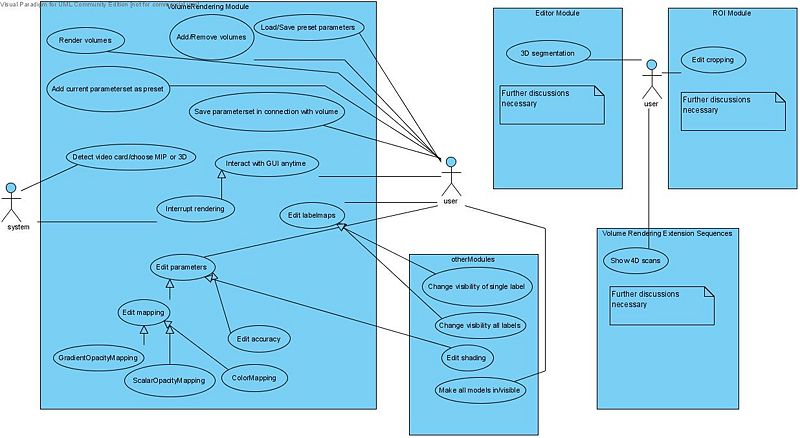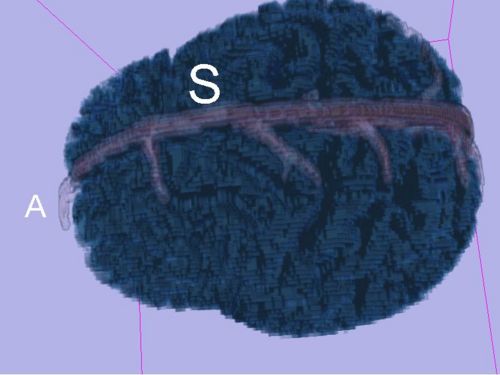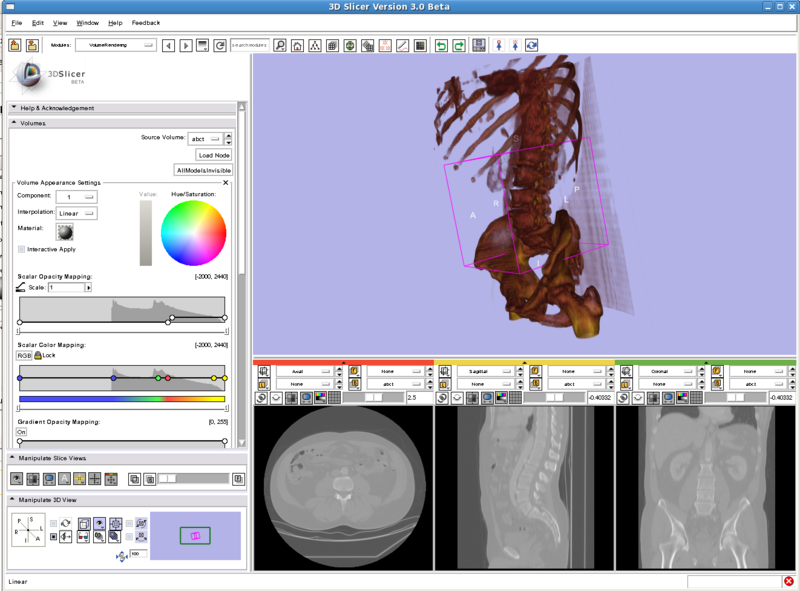Slicer3:Volume Rendering
From NAMIC Wiki
Home < Slicer3:Volume Rendering
Contents
Overview
The topic of the new Volume Rendering Module is the integration of hardware accelerated volume rendering. There is a special focus of achieving interactive update rates, easy user interaction (e.g. by offering several presets) and the use of label maps. Goals also include incremental updates (if module is used with Editor module), saving and loading of the configuration etc.
Archtecture/Design
Test the module
- Turn VolumeRenderingModule on (in cmake)
- Compile
Latest results and limitations
Description
- Loading changing of MRML-Nodes is possible during runtime
- At the moment no removing of MRML-Nodes possible
- Change properties (Shading, Interpolation, mapping)
- Calculate transfer functions automatically
- Performance:
- Interrupting is possible in render window.
- Interrupting somewhere else requires platform dependent coding (q.v. problems)
- Cropping is possible
Screenshots
next Tasks
Goals
Volume rendering presets :
- MIP (Maximum Intensity Projection)
- CT Bone and vessel
- Use Hounsfield units
- Bone +400->+1000
- Soft tissue +40->+80
- Water 0
- Fat -60->-100
- Lung -400->-600
- Air -1000
- Problem with Vessels: Different contrast mediums?!
- Use Hounsfield units
- T1 MR Air/skin interface
- Label map per-label object rendering
Slicer3 module interface:
- Select from loaded volumes
- Specify preset transfer functions or use KWWidgets tools
Slicer3 internals:
- Correct coordinates including transforms
- Level of detail rendering
- Proper integration with surface rendering
Different Volume Rendering Algorithms
- RayCast
- 2D Texture Mapping
- 3D Texture Mapping
- ...
Wish List
- 2D Transfer functions - may require specialized opengl code integrated with VTK. Talk with Gordon about latest work from Utah.
- use glTexSubImage3D so that incremental changes to the volume can be quickly reflected
- use distance maps (inlcude several components) in rendering



